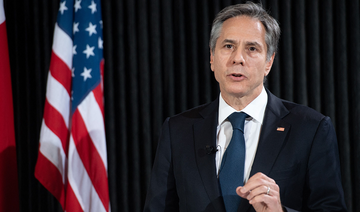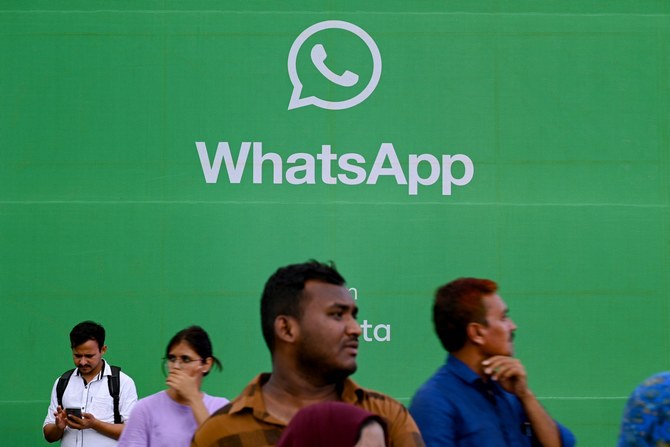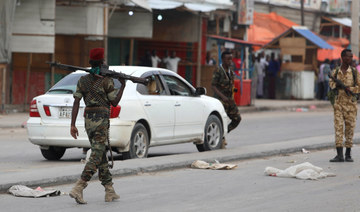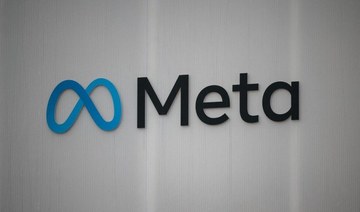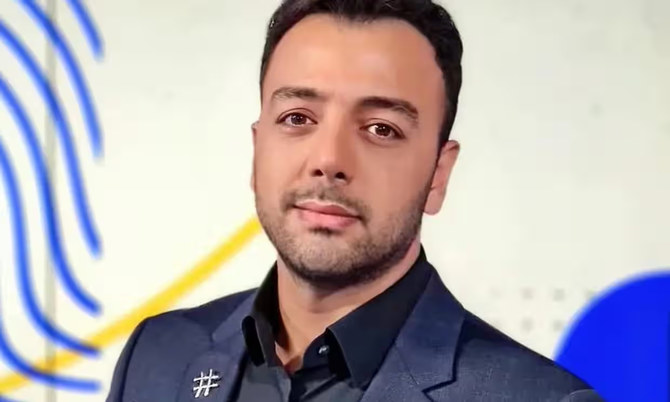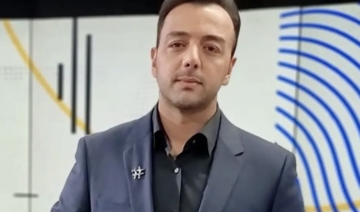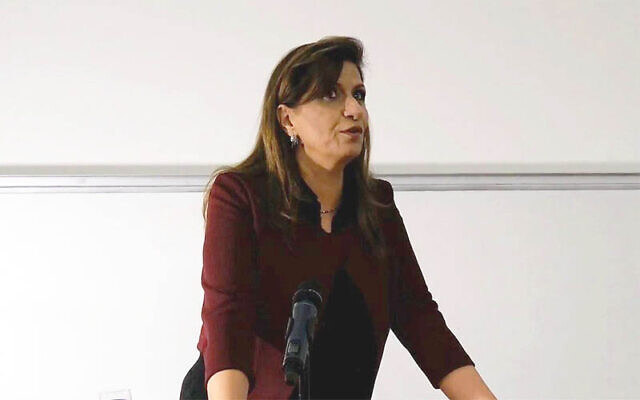DUBAI: Amid the scenes of horror and human suffering unfolding in the Gaza Strip in recent days, one series of images stands out.
Shortly after 3 p.m. local time on Saturday, a salvo of rockets fired by Israeli drones struck a high-rise in central Gaza City. Five minutes after that first strike, heavier missiles fired by Israeli fighter-bombers slammed into the 12-story building, witnesses said, causing the structure to collapse in a cloud of dust and debris.
Israel has flattened other buildings in Gaza over the past week — just as it did during its 2014 ground incursion — and destroyed tunnels and houses said to be used by leaders of Hamas, the Palestinian group that controls the territory. But this attack was different.
The tower was home to the offices of Associated Press, the American news agency, the Qatar-funded Al-Jazeera media network and local news outlets.
In a tweet, the Israeli Defense Forces (IDF) said it was “striking Hamas weapons hidden inside civilian buildings in Gaza,” but the claim has yet to be proven. The AP said it had “no indication” Hamas was in the building, something which would have been “actively checked” so as not to put journalists at risk.

Last week’s events in Gaza are hardly the first time that the media has found itself in the line of fire during a Middle East conflict. (AFP)
The AP also said a dozen of its staff members and freelancers were in the building at the time of the IDF warning. All seem to have escaped unhurt. Al-Jazeera has also reported no casualties although it says valuable equipment and footage have been lost.
Information warfare has long been at the heart of the Israel-Hamas conflict. Both sides understand that powerful and simple imagery and story-telling can sway international opinion in a way that months of formal diplomacy or conventional military action cannot. Often outcomes are contested, while underlying events and motivations are hard to discern, emerging only after months and years of inquiry.
That said, last week’s events in Gaza are hardly the first time that the media has found itself in the line of fire during a Middle East conflict. In 2019 a US court found Syrian President Bashar Assad’s government liable for the death of American war correspondent Marie Colvin, 56, in February 2012 in the besieged city of Homs. She and French photographer Remi Ochlik, 28, died when the building they were in was shelled.
In 2003, a shell fired by an American tank at the Palestine Hotel in Baghdad killed two journalists, a Reuters cameraman and a Spanish television anchor. The hotel had been a favorite of journalists and media personnel covering the US-led invasion.
Then there was the 2010 Gaza Freedom Flotilla incident, when six boats manned by mainly Turkish pro-Palestinian supporters tried to sail to the Gaza Strip, only to be stopped at sea by abseiling Israeli commandos.
The activists were trying to illustrate that Gaza was (and is) closed to the outside world, that Israel controls access and that Palestinians living in the territory are under siege with few, if any, economic opportunities. The activists claimed to be simple humanitarians, albeit ones supported by professionally equipped TV crews and other media.
Israel said that hard-liners intent on confrontation had joined the more peaceful protesters. These agitators massed on one of the six boats and sparked the ensuing violence by trying to seize soldiers’ weapons. At least nine people died in the incident.
To Israel’s supporters, the actions of the commandos showed military skill and bravery.
To detractors they came across as trigger-happy troops intent on defending an illegal blockade.
On this latest occasion, Israel said that along with the journalists and residents who lived there, the high-rise in Gaza City also housed a Hamas intelligence unit. Israel often accuses Palestinian militants of using civilians and civilian buildings as shields for their activities.
“It is a perfectly legitimate target,” Israeli Prime Minister Benjamin Netanyahu said on Sunday in the wake of the tower’s destruction. Defenders of his stand quickly pointed to an article by Matti Friedman, a former AP journalist, published in The Atlantic magazine in 2014 after Israel’s bloody incursion into the Gaza Strip. Friedman wrote that he had seen that the building was also being used by Hamas.
“Hamas understood that reporters could be intimidated when necessary and that they would not report the intimidation. The AP staff in Gaza City would witness a rocket launch right beside their office, endangering reporters and other civilians nearby — and the AP wouldn’t report it, not even in AP articles about Israeli claims that Hamas was launching rockets from residential areas,” Friedman wrote.
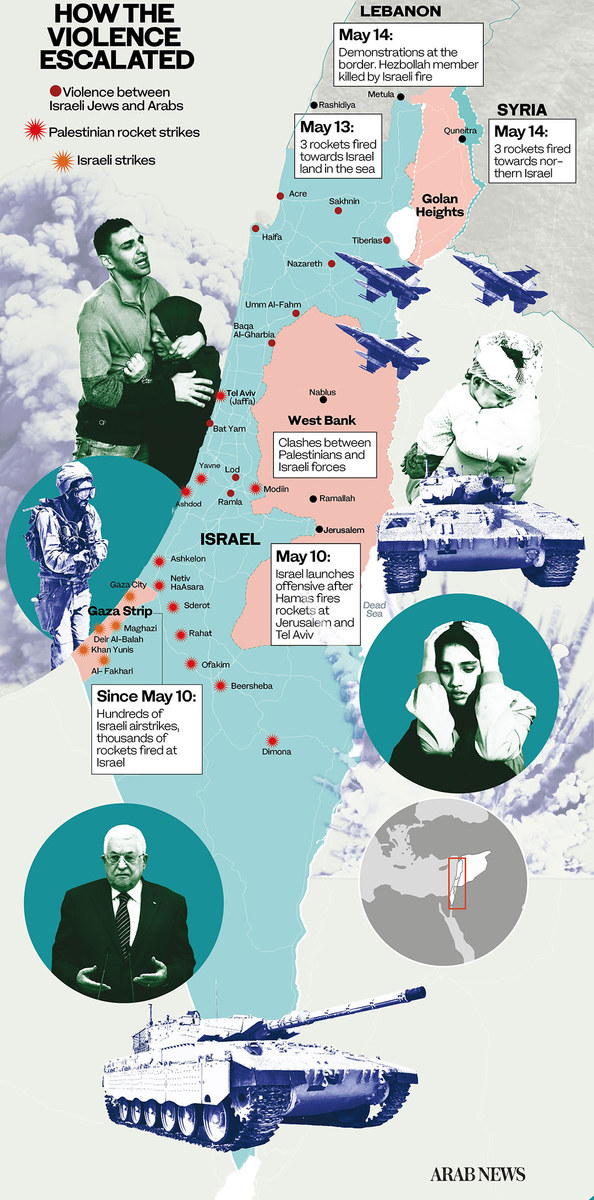
That interpretation is contested — strongly. AP President and CEO Gary Pruitt said in a statement on Sunday that his agency had operated in the Al-Jalaa Tower for 15 years. “We have had no indication Hamas was in the building or active in the building,” he said, adding: “We would never knowingly put our journalists at risk.”
The building’s other tenant, Al-Jazeera, has long been the Israeli government’s bete noire. In 2017, Israel said it was banning the news organization on the grounds that it was too close to Hamas.
At the time, Avigdor Lieberman, then Israeli defense minister (and a political hard-liner), described some of the outlet’s coverage as “Nazi Germany-style” propaganda. Other Arab states have often accused the TV station of propagating the views of Qatar as well as the Muslim Brotherhood, which is close to Hamas.
Al-Jazeera’s defenders say that the channel tells the story from both sides of any conflict and takes care to obtain comments from spokespeople in Israel. It has also pioneered coverage in previously obscure and dangerous locations, such as Gaza and Afghanistan, and provides a voice for those previously neglected.
The truth, according to Al-Jazeera’s supporters, is that the nationalist Israeli government, led by Netanyahu, is trying to suppress inconvenient truths and deflect attention from its own activities such as settlement building, which almost all of the international community views as illegal.
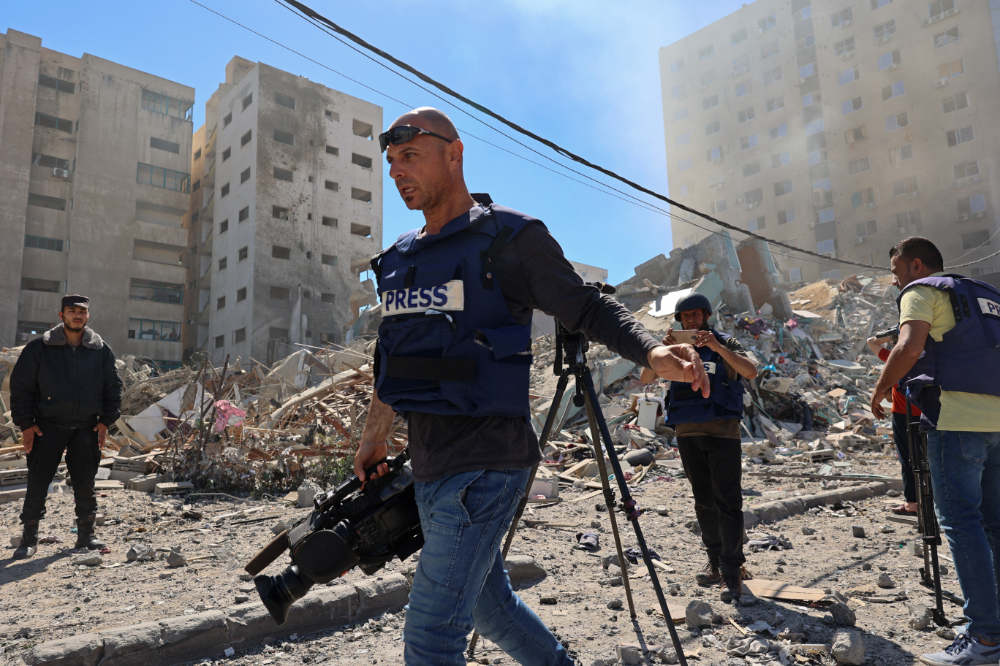
What the world does know is that journalists have often been caught in the crossfire, both literal and metaphoric, of these divergent views. (AFP)
However, speaking to Arab News on the condition of anonymity, a former Al-Jazeera journalist said: “If anyone has followed Al-Jazeera’s coverage of Middle East upheavals through the decades, be it the Iraq invasion and insurgency, the overthrow of Egypt’s Islamist government or Israel’s wars with Hamas and Hezbollah, they will be in no doubt about the network’s editorial agenda.
“During the US-led invasion and occupation of Iraq, this overtly hostile approach of a TV network financed by a strategic ally left US administration officials so frustrated, angry and powerless that President George Bush reportedly considered bombing Al-Jazeera’s headquarters in Doha in 2004.
“Israeli officials probably experience the same disappointed rage at the network’s aggressive coverage every time conflict erupts in Gaza, which could well be the reason behind incidents like the attack on the high-rise — unless, in each case, the Israeli government knows something that the rest of the world doesn’t know.”
What the world does know is that journalists have often been caught in the crossfire, both literal and metaphoric, of these divergent views.
The Palestinian Center for Development and Media Freedom, a think tank, claims that between 2000 and September 2018, Israel killed 43 journalists in the West Bank and Gaza. And on Monday, Ignacio Miguel Delgado Culebras, the Middle East and North Africa representative of the Committee to Protect Journalists (CPJ), said that over the past week the CPJ has documented the bombing of three buildings housing 15 media outlets.
“Local journalists have also been injured covering the airstrikes and many lost their equipment in the bombed outlets. Journalists are also being hurt and arrested while covering protests in the West Bank. There is no indication that these violations of press freedom will subside any time soon,” Culebras said in a statement to Arab News.
“The IDF had known the locations of the buildings and warned residents to evacuate shortly before the airstrikes. They also claim that those buildings housed Hamas intelligence and military offices or some sort of Hamas’ presence, even though AP has said that they had no indication of such presence.
“These bombings and the fact that no foreign journalists are being allowed in Gaza raise the suspicion that Israel is trying to prevent coverage of the airstrikes and military operations in the Gaza Strip.”
Finally, some experts say, events in Gaza and elsewhere in the West Bank and Israel illustrate the growing dangers to journalists operating in conflict zones where front lines are often difficult to discern.
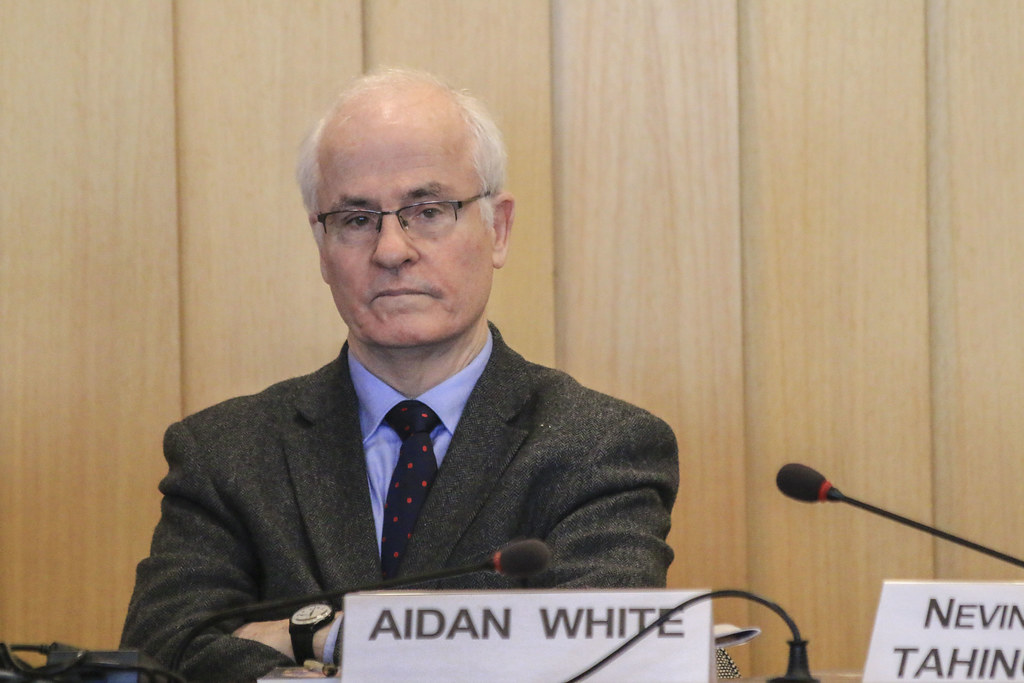
According to Aidan White, founder of the Ethical Journalism Network, the destruction of media assets in Gaza City is serious but by no means unusual. “If one looks back over the past 25 years, the targeting of media institutions and journalists themselves has increased dramatically,” he told Arab News.
This is happening “not least because the capacity of the media to report from war zones — and to be able to report wrongdoing and inappropriate behavior or war crimes — is greatly enhanced, and changing technology has had a lot to do with it.”
The phrase “truth is the first victim of war” could not ring more true now amid Israel’s campaign in Gaza. But then again, the truth rarely is told during times of war. History is written after the battles have taken place, the truces are signed and the fighting has ended.
It is the facts gleaned during moments of crisis and violence that are pivotal to this writing of history.
Twitter: @rebeccaaproctor




